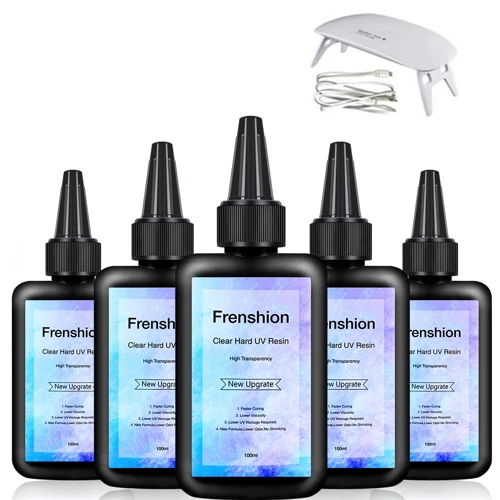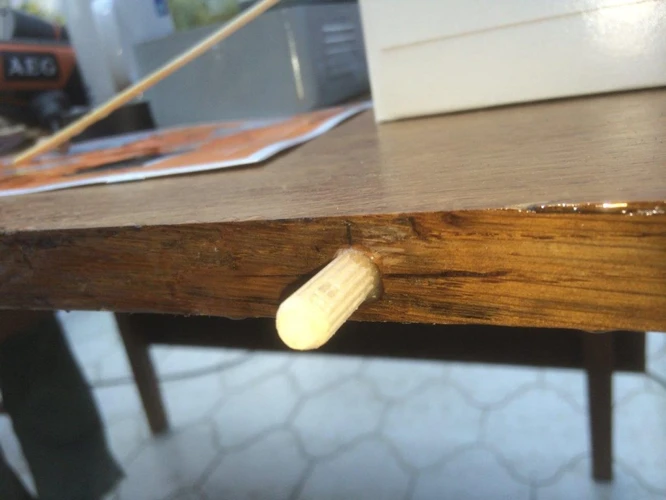Resin crafting has become a popular hobby and a vital part of many professional makers’ repertoires. The art of fusing resin components seamlessly is a cornerstone of high-quality craftsmanship. Mastering resin glue techniques is essential for anyone looking to create durable, aesthetically pleasing projects that stand the test of time. This comprehensive guide will walk you through the nuances of selecting the right adhesive, preparing your workpieces, and executing the perfect bond.
Choosing the Best Glue for Resin Projects
When it comes to assembling your creations, not just any adhesive will do. Choosing the best glue for resin is paramount to your project’s longevity and finish. There are several factors to consider, including the type of resin, the desired strength of the bond, and the project’s exposure to elements.
Epoxy Adhesive Guide
Epoxy adhesives are the go-to for most enthusiasts and professionals. They offer a formidable bond and are compatible with a wide range of materials. This epoxy adhesive guide will help you navigate the various options, ensuring that you pick an epoxy that’s perfectly suited to your project’s needs.
Waterproof Resin Glue Options
If your project will encounter moisture or is intended for outdoor use, waterproof resin glue should be your adhesive of choice. This category includes marine-grade adhesives that can withstand the rigors of weather and water exposure without losing their grip.
Strong Resin Adhesives
For projects that demand the highest level of durability, strong resin adhesives are the answer. These specialized glues offer enhanced bonding capabilities, perfect for heavy-duty applications where strength cannot be compromised.
Preparation for Bonding Resin Pieces
Even the best adhesive can fail if the surfaces it’s bonding aren’t properly prepared. The key to a successful bond lies in meticulous preparation, which involves cleaning and roughening the surfaces to ensure the glue has the best possible chance to adhere.
Cleaning and Surface Preparation
Before any glue is applied, the resin surfaces must be free of any contaminants. Oils, dust, or previous adhesive residues can prevent a solid bond. A thorough cleaning, followed by light sanding, will create the ideal surface for adhesion.
Materials Required for DIY Resin Crafting
- Resin components
- Appropriate adhesive
- Sanding paper (fine-grit)
- Clean, lint-free cloths
- Protective gloves and eyewear
- Clamps or weights for securing
Step-by-Step Guide to Gluing Resin
The process of gluing resin can be intricate but rewarding. Following a step-by-step approach ensures that each stage of the bonding is executed with precision, leading to a clean and robust finish.
Mixing and Applying the Glue
Begin by mixing your chosen adhesive according to the manufacturer’s instructions. It’s crucial to get the ratio right for the epoxy to cure properly. Apply a thin, even layer to both surfaces you wish to bond, using tools like a spatula or brush for precision.
Positioning and Clamping
After applying the adhesive, carefully align the resin pieces. Any misalignment at this stage could be permanent. Once in position, use clamps or weights to hold the pieces together, ensuring they stay put while the glue sets.
Curing Resin with Glue
The curing process is where patience is key. Depending on the adhesive used, curing times can vary. It’s essential not to disturb the pieces during this time. Once fully cured, the bond should be as strong as the resin itself.
Advanced Resin Glue Techniques
For those looking to tackle more complex projects or repairs, advanced techniques may be necessary. These methods can involve different types of adhesives and more intricate clamping setups to deal with the challenges of larger or more detailed workpieces.
Dealing with Larger Projects
Larger resin projects may require a strategic approach to gluing. This could involve segmenting the bonding process or using a combination of adhesives to handle different stress points throughout the piece.
Resin Repair Tips
Accidents happen, but many can be rectified with the right resin repair tips. Whether filling in cracks or re-bonding broken pieces, the key is to apply the glue carefully and ensure the repair is inconspicuous and robust.
Finishing Touches and Post-Curing
Once your project is bonded and cured, you may need to apply finishing touches. These could include additional sanding, polishing, or painting. Some adhesives also benefit from a post-curing process, which can involve heat treatment to maximize the strength of the bond.
Troubleshooting Common Issues
Despite thorough preparation, sometimes issues arise. Bubbles, weak joints, or cloudy finishes can all occur. Knowing how to troubleshoot these common problems will ensure that your project maintains its intended look and integrity.
When working on your DIY projects, it’s important to know the right techniques for bonding different materials. If you’re looking to work with resin, our guide on how to glue resin offers detailed steps and tips for successful adhesion. And if your project involves other materials, you might also be interested in our articles on how to glue ceramic, which can be quite tricky, or our tips for working with more common materials in our article on how to glue plastic. For those wondering about combining different types of materials, our piece on how to glue resin to plastic will provide you with the necessary know-how for a strong bond. Whether you’re repairing a broken item or creating something new, we’ve got you covered with our adhesive advice.
Conclusion: Ensuring Successful Resin Adhesion
Successful resin adhesion is a combination of the right materials, preparation, and technique. By following this guide, you’ll be equipped with the knowledge to select the appropriate glue for resin projects, prepare your workpieces, and execute a bond that’s both aesthetically pleasing and enduring. Whether you’re engaging in DIY resin crafting or professional fabrication, the key to a flawless finish lies in understanding and applying these foundational resin glue techniques.


